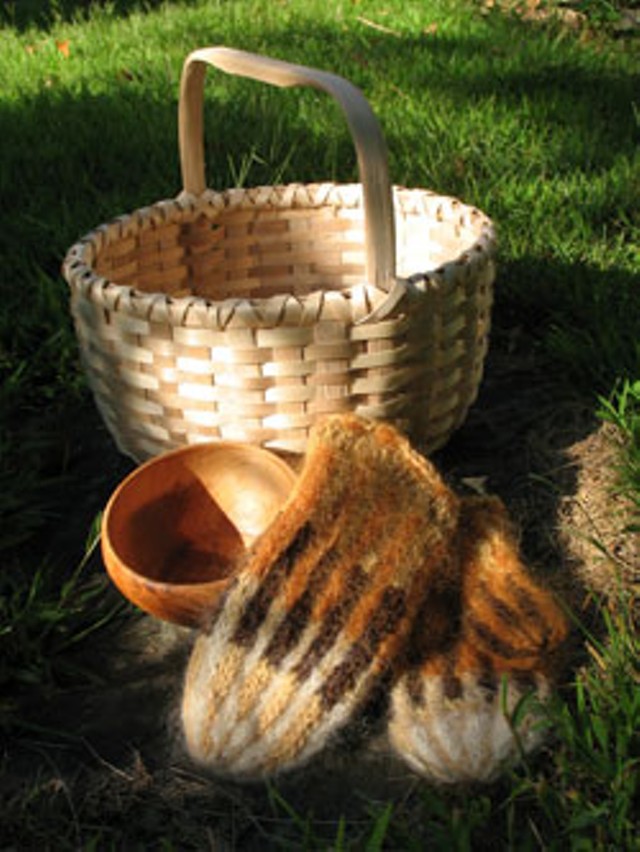Published October 15, 2008 at 5:00 a.m.
What can local artisans teach us about land conservation? Allaire Diamond pondered this question as she formulated her thesis project. Diamond, a graduate student in the University of Vermont’s Field Naturalist Program and a dabbler in wood-block printing, wanted to incorporate her interest in art into her studies in field biology. She began with the speculation that people who use natural materials in their work might see the land differently from other artists.
With support from her sponsor — Vermont Land Trust — Diamond interviewed 18 artisans from Vermont, Massachusetts and Maine about the plants they use and the techniques they employ. She focused on artisans who weave baskets and use natural dyes.
Diamond found the crafters possess a wealth of information about the natural materials they use, which include bark from black ash and paper birch trees, willows, red osier dogwood, berries and mushrooms. “I’ve really been amazed at the depth and breadth of knowledge the artisans have,” she says. “Most don’t have a scientific background.”
Land conservation, broadly defined, means using land wisely — a principle Diamond found her interviewees supported in practice. For example, many artisans know paper birch bark must be harvested during certain times of the year, or the tree will die. (Some simply use bark from already-dead trees.) Many of them educate others about the plants they use, and all strive to imbue the natural materials with added beauty and functionality. “Most of these species aren’t valuable on their own but because these artisans make something beautiful out of them,” Diamond notes.
Some materials and techniques are hundreds of years old, part of Abenaki or other Native American traditions. Others, Diamond says, are relatively new, such as the practice of using mushrooms to dye wool for knitting and weaving, or bark for basket weaving. Mushrooms don’t need as much mordant (to set dyes) as other substances do, and they can produce vibrant reds, pinks, yellows and purples.
One of Diamond’s goals is to foster relationships between artisans and landowners. To this end, she organized a workshop earlier this month at the Brewster Uplands Conservation Trust in Cambridge. Local artisans Judy Dow and Tom Cady led landowners through the woods, pointing out bark for basket weaving and berries and roots that can be used as natural dyes.
This spring, Diamond plans to create an informational book for artisans to use in finding natural resources — and to help landowners recognize the artistic potential of ordinary plants on their land.
More By This Author
Speaking of...
-

UVM, Middlebury College Students Set Up Encampments to Protest War in Gaza
Apr 28, 2024 -

Q&A: Catching Up With the Champlain Valley Quilt Guild
Apr 10, 2024 -

Video: The Champlain Valley Quilt Guild Prepares for Its Biennial Quilt Show
Apr 4, 2024 -

Q&A: Exploring the Haskell Free Library & Opera House With Hannah Miller
Mar 13, 2024 -

Video: Hannah Miller Visits the Haskell Free Library & Opera House in Derby Line, Vt., and Stanstead, Québec
Mar 7, 2024 - More »
Comments
Comments are closed.
From 2014-2020, Seven Days allowed readers to comment on all stories posted on our website. While we've appreciated the suggestions and insights, right now Seven Days is prioritizing our core mission — producing high-quality, responsible local journalism — over moderating online debates between readers.
To criticize, correct or praise our reporting, please send us a letter to the editor or send us a tip. We’ll check it out and report the results.
Online comments may return when we have better tech tools for managing them. Thanks for reading.














































